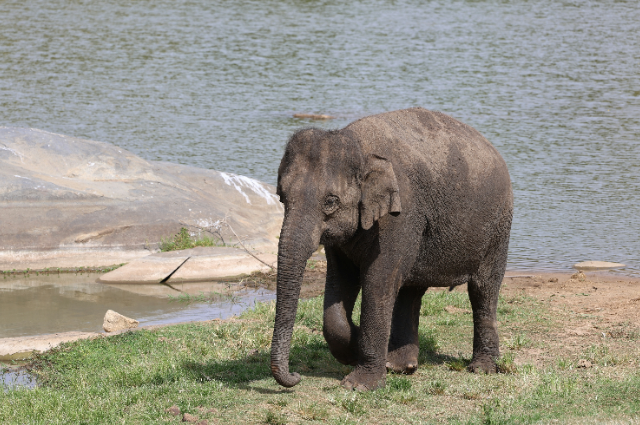
Photo by Srivenkata Subramanian on Unsplash
In the green heart of Assam, a baby elephant wandered into a village, completely alone. No mother, no herd—just a confused little calf, trying to figure out where he belonged. It was late April 2025 when the villagers of Aparia Chapori first noticed him in their maize fields. A day later, he was seen again, this time in a dry riverbed, still alone, still searching.
Elephants aren’t meant to be alone. They live in families—tight, loving herds that move together, eat together, and protect each other. So seeing a young calf by himself was more than unusual—it was heartbreaking. Maybe he got separated while the herd crossed through human settlements. Maybe something happened to his mother. Whatever it was, it left him vulnerable, scared, and in need of help.
That help came quickly. The Forest Department at Orang Tiger Reserve didn’t waste time. Along with experienced mahouts—people who’ve worked with elephants all their lives—they tried to reunite the calf with a nearby herd. There was hope when a group of seventeen wild elephants was found nearby. For two days, the team waited and watched, hoping the herd would accept him. But the herd moved on without him. That’s when it became clear—he wouldn’t survive on his own.
The next best option? Bringing him to a place where he could be safe, fed, and loved. On May 5, he was taken to the Centre for Wildlife Rehabilitation and Conservation, better known as CWRC, near Kaziranga National Park. It's a place that’s seen many rescues, but each one is special, and this calf’s arrival touched everyone.
At CWRC, the first thing they did was feed him milk from a bottle. And he took it—nervously at first, then more easily. That moment, simple as it was, felt like a little victory. He was beginning to trust again.
The center already had three other young elephants, all around the same age. Now, he had company—other little calves who, just like him, had gone through their own losses and now shared space, food, and gentle moments together. And that matters more than we think. Elephants are emotional creatures. They need affection, touch, and companionship to heal. These nursery friendships might be the most important part of their journey.
CWRC isn’t new to this work. Since 2002, it’s been caring for wildlife that’s been injured, orphaned, or displaced. Run together by the Wildlife Trust of India, the Assam Forest Department, and the International Fund for Animal Welfare, the center has become a symbol of what’s possible when people come together for animals.
They’ve cared for rhinos, leopards, clouded leopards, and even slow lorises. And when it comes to elephants, their track record is inspiring. Out of 29 rescued calves over the years, 12 have been released back into the wild. That means they didn’t just survive—they learned to be elephants again, fully and freely.
But none of this happens quickly. It takes time, care, and a lot of patience. The calves are slowly trained to forage, to rely on forest sounds and instincts, to be cautious of humans, and to learn the ways of the wild. When they’re ready, they’re gently released into safe forest areas and monitored. The team keeps track of them through radio collars, making sure they’re doing well and adapting.
This little calf from Aparia Chapori has a long road ahead. But he’s in good hands.
His story is part of something much bigger. Assam is one of India’s most beautiful and wild regions, home to thousands of wild elephants. But it's also a place where humans and elephants often cross paths—sometimes peacefully, but sometimes not. As forests shrink and farms expand, elephants end up in villages looking for food. It leads to damaged crops, scared families, and sometimes, tragedy. This calf might be one of the many quiet casualties of that growing conflict.
And yet, in the middle of that tension, this rescue shows us another side—a better one. A side where people didn’t just ignore the lost calf or chase it away. They reached out, reported it, and helped save him. The forest staff worked around the clock. The mahouts used all their experience. And the team at CWRC gave him what he needed most: safety, food, and care.
This isn’t just a story about a wild animal being rescued. It’s a story about what it means to be human. About choosing kindness, even when it takes effort. About seeing a scared little creature and deciding that his life matters. About believing that even when we can’t fix everything, we can make a difference, one life at a time.
The calf won’t remember the names of the people who helped him. But because of them, he has a future. One day, if all goes well, he’ll walk back into a forest, bigger and stronger, maybe even leading a herd of his own. He’ll be free.
Until then, he’s growing up in a place built on hope—a quiet, green corner of Assam where broken wild hearts are gently put back together.
And for everyone who played a part in his rescue, his recovery will be more than just a success story. It will be a reminder that even in a world full of noise and struggle, kindness can still echo louder than fear.
